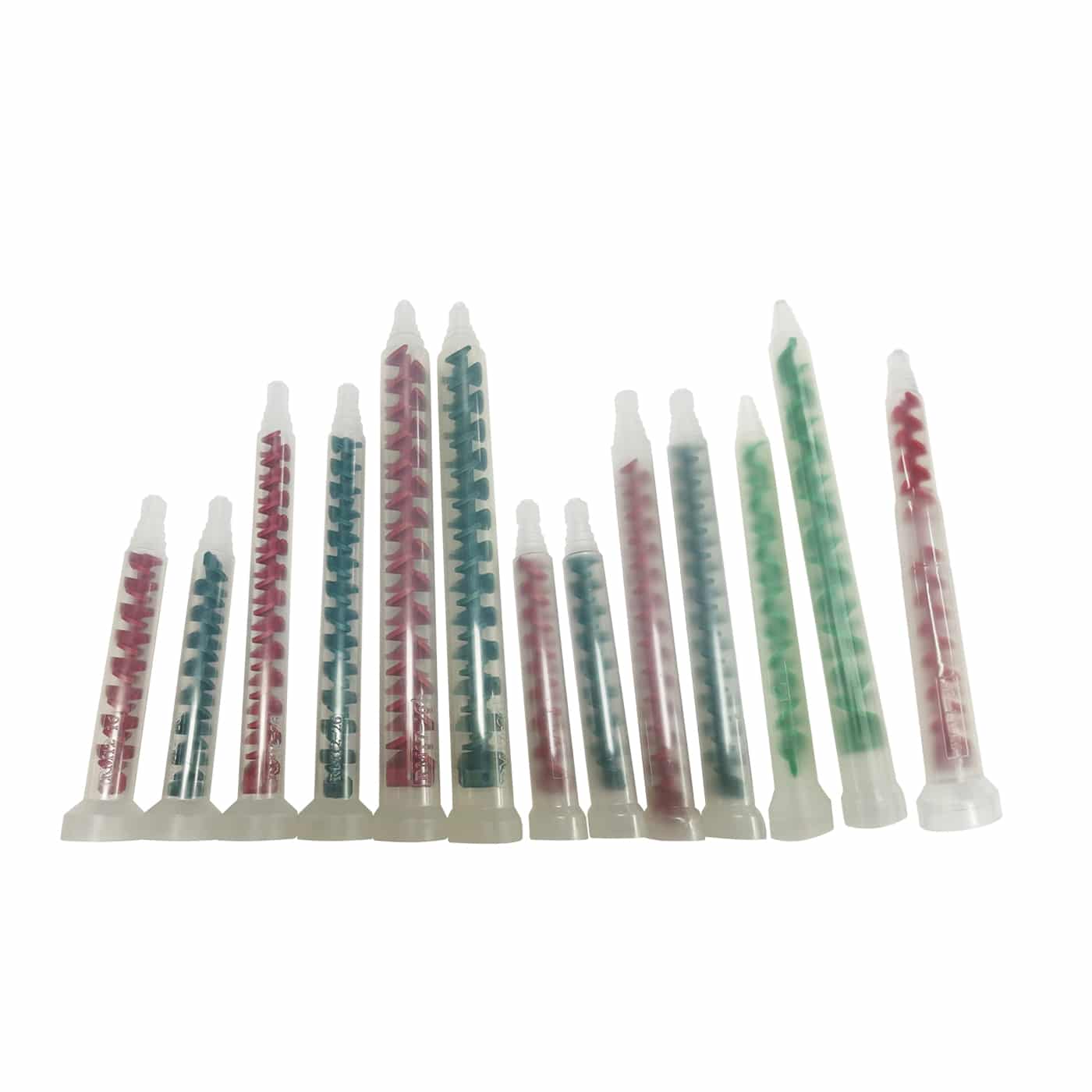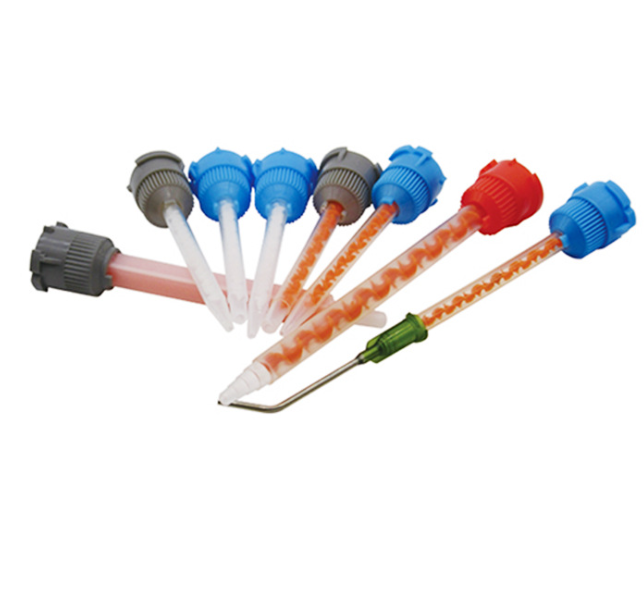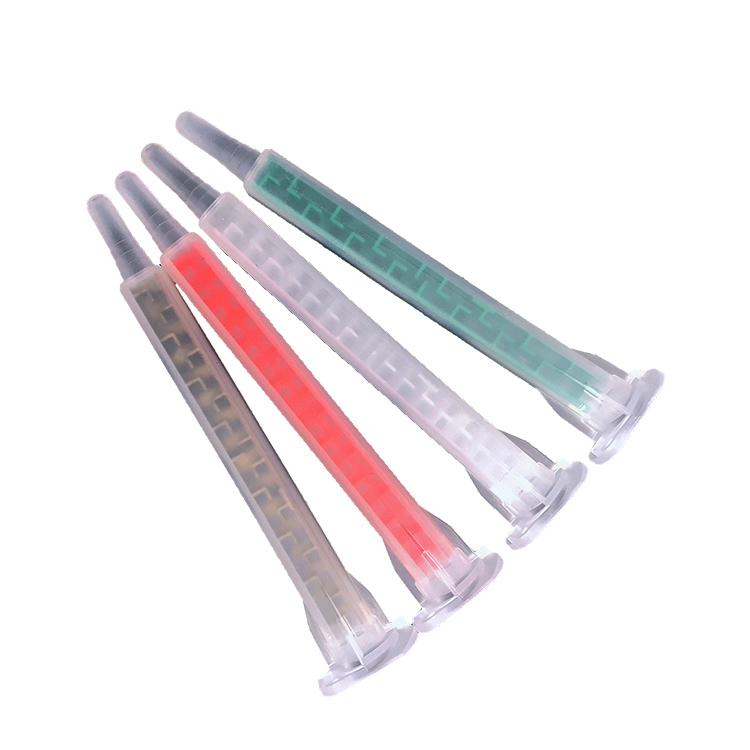Adhesive mixing nozzles are an essential component of many industries that use adhesives for bonding materials together. They are used to combine and dispense two or more components of an adhesive mixture, ensuring the proper ratio and consistency of the adhesive. Adhesive mixing nozzles come in different shapes and sizes, and choosing the right nozzle is essential to achieve optimal performance. In this article, we will explore the different types of adhesive mixing nozzles, their applications, and factors to consider when selecting the right nozzle.



Types of Adhesive Mixing Nozzles
Adhesive mixing nozzles come in various designs, and the most common types are static mixing nozzles and dynamic mixing nozzles.
Static Mixing Nozzles
Static mixing nozzles are also called motionless mixers, and they operate without any moving parts. They rely on a series of elements or vanes inside the nozzle to create turbulence and mixing between the adhesive components. Static mixing nozzles are commonly used in low to medium viscosity adhesives and applications that require a high degree of accuracy and consistency.
-
Design and Operation
Static mixing nozzles are designed with a series of mixing elements or vanes arranged in a specific configuration inside a cylindrical housing. The number, shape, and spacing of the elements can be adjusted to achieve the desired degree of mixing. When the adhesive components enter the nozzle, they are split into multiple streams, which pass through the mixing elements. As the streams flow through the elements, they are redirected, split, and recombined, resulting in intense mixing and blending of the adhesive components.
-
Applications
Static mixing nozzles are commonly used in the automotive, construction, and aerospace industries for bonding materials such as metals, plastics, and composites. They are also used in the electronics and medical device industries for bonding components that require precise and consistent mixing.
-
Benefits
Static mixing nozzles offer several benefits, including high accuracy and consistency, low maintenance, and easy to install and operate. They also have a compact design, making them suitable for use in confined spaces.
Dynamic Mixing Nozzles
Dynamic mixing nozzles, also known as agitated mixers, are designed with moving parts that create mechanical agitation or movement to mix the adhesive components. They are used for higher viscosity adhesives and applications that require a higher degree of mixing.
-
Design and Operation
Dynamic mixing nozzles can have various designs, including impellers, rotors, or other types of mixing blades inside the nozzle. These blades can be driven by a motor or a pressurized fluid to create the required agitation and mixing. When the adhesive components enter the nozzle, they are subjected to the mechanical agitation or movement, which creates intense mixing and blending. The degree of mixing can be adjusted by varying the speed of the blades, the number of blades, or the shape of the blades.
-
Applications
Dynamic mixing nozzles are commonly used in the automotive and aerospace industries for bonding materials that require a high degree of mixing, such as composites and metals. They are also used in the construction industry for bonding materials such as concrete and wood.
-
Benefits
Dynamic mixing nozzles offer several benefits, including the ability to handle higher viscosity adhesives and achieve a higher degree of mixing. They also provide excellent repeatability and consistency, making them suitable for use in high-volume production environments.
Factors to Consider When Selecting Adhesive Mixing Nozzles
Choosing the right adhesive mixing nozzle is essential to achieve optimal performance. Several factors should be considered when selecting a nozzle, including:
-
Adhesive Viscosity:
The viscosity of the adhesive will determine the type of mixing nozzle that is suitable. Low to medium viscosity adhesives are suitable for static mixing nozzles, while higher viscosity adhesives require dynamic mixing nozzles.
-
Mixing Ratio:
The mixing ratio of the adhesive components must be considered when selecting a mixing nozzle. Some nozzles are designed to handle a specific mixing ratio, while others can handle a range of ratios.
-
Application:
The application and material being bonded will also influence the type of mixing nozzle required. Some materials may require a higher degree of mixing, while others may be more sensitive to shear forces created by dynamic mixing nozzles.
-
Production Volume:
The production volume and frequency of adhesive mixing should also be considered. High-volume production environments may require nozzles that can handle larger volumes of adhesive, while smaller operations may be more suited to lower-volume nozzles.
Conclusion
In conclusion, if you want to buy adhesive mixing nozzles, consider to buy static mixing nozzles or dynamic mixing nozzles first, and then find out the most suitable mixing nozzles by adhesive viscosity, mixing ratio, application, and production volume.
